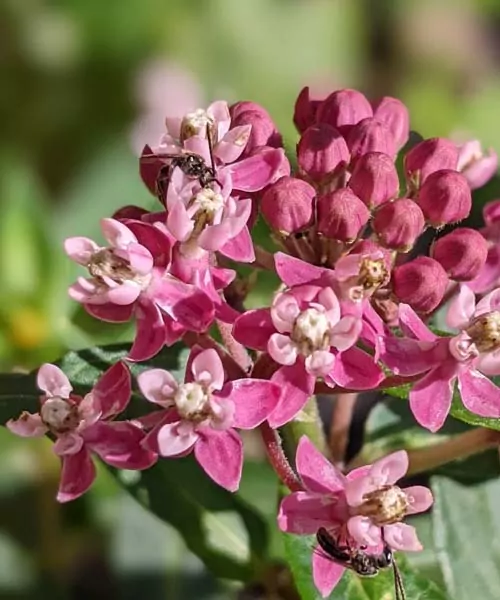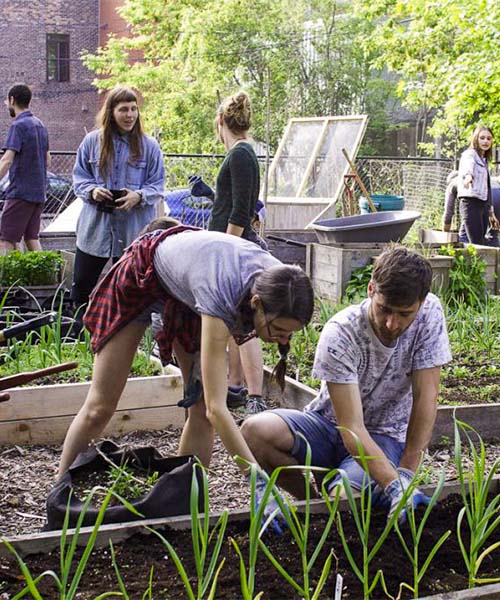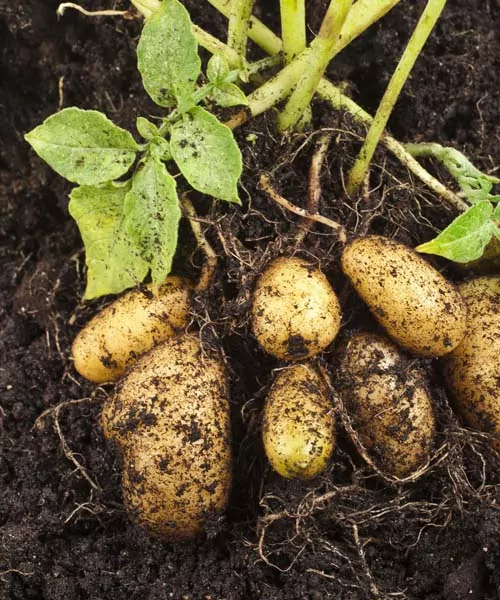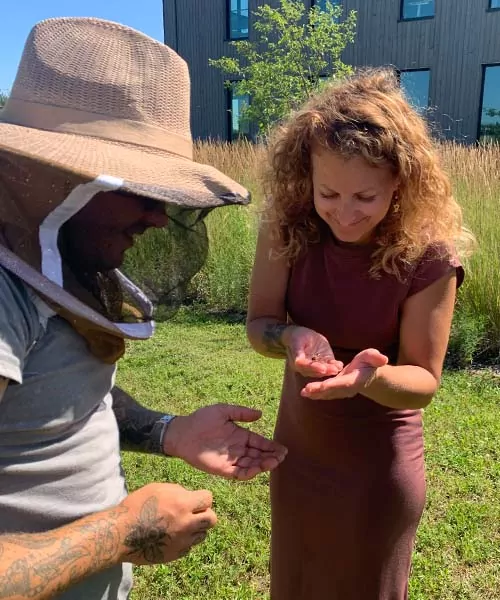7 things you can do to help bees and all pollinators
Honey bees, wild bees, and other pollinators help produce more than a third of all the food we eat. Without them, the vast majority of wildflowers, shrubs, and trees wouldn’t be able to reproduce either, affecting the creatures who rely on this vegetation for survival.
Despite playing an essential role in the ecosystem, pollinators are in trouble. The good news? There are many actions, both big and small, that you can take to help them! From the plants you grow to the food you eat, here are 7 ways to help protect bees and all pollinators.
-

-
1. Plant more flowers
Planting bee-friendly flowers and plants is one of the most direct ways to positively impact the pollinators in your area and support their habitat. According to the Canadian Wildlife Federation, if everyone in Canada with a lawn converted just a quarter of it into wildflower meadows, we could add almost 15,000 hectares for pollinators. You don’t need a big space though! You can grow bee-friendly flowers anywhere that could use a little brightening up, including:
- Balconies
- Rooftops
- Backyards
- Lawns
- Community gardens
- Alleyways
- Vacant lots
When choosing your flowers, it’s best to pick blooms native to your area. Not only are these favored by native wild bees – they also require less maintenance since they naturally thrive in your climate. Check out these ecoregional planting guides from Pollinator Partnership (Canadian guides) and The Xerces Society (US guides). Buying local is helpful when looking for native plant seeds. Here’s a list of seed companies in Canada and here’s one for the US.
-

-
2. Become a lazy gardener
Let’s hear it for lazy gardens! If all that planting sounds like a lot of work, it doesn’t have to be. Lazy gardens can be the most effective and attractive to bees. Environmental activist David Suzuki has some great advice on how to create a low-effort pollinator-friendly garden.
When it comes to cleaning your garden or yard in the fall, bees will thank you for taking the “lazy” approach. Leaving some twigs on the ground and not raking up all the leaves provides a nesting area for solitary bees during the winter.
3. Go pesticide free
Pesticides have done massive damage to bee populations. With a few modifications to your landscaping practices, you can do away with harmful pesticides and keep your property looking beautiful using safe and natural techniques.
Growing native plants is a great way to become less reliant on pesticides. Because these species have evolved to thrive in the local ecosystem, they are often more resistant to native pests than other introduced plant species. There are also many native plants that attract the natural enemies of the pests you’re trying to get rid of (like ladybugs, who love to feast on aphids and mealybugs).
Check out Pollinator Partnership’s Pesticide Learning Center to keep learning more.
-

-
4. Buy from local organic farms
Small, local, organic farms that grow a diverse selection of fruits and veggies are a pollinator’s paradise. Be sure to support your local farmers by stocking up on fresh produce at the market or subscribing to a CSA (Community Supported Agriculture) vegetable basket. The farmers, the bees, and your tastebuds will all thank you!
5 food choices to reduce your environmental footprint
Minimize your environmental impact by making informed choices about what you eat and where it comes from.
5. Support pollinator protection initiatives or nonprofits
You don’t have to change the world on your own. Volunteer with or donate to one of the many fantastic organizations helping pollinators and their habitats.
Here are a few to get you started:
Pollinator Partnership
The largest non-profit supporting pollinators in North America, this organization is dedicated to the protection and promotion of pollinators and their ecosystems through conservation, education, and research. They are also one of our partners – a portion of the proceeds from each bee hotel we install is donated to support their work.
The Xerces Society for Invertebrate Conservation
This organization offers tons of opportunities to get involved in pollinator protection across North America, both in person and remotely.
1% for the Planet
1% for the Planet is a global network of businesses and environmental organizations working together to protect our planet. Use the Environmental Partners directory to find organizations helping pollinators in your area.
Alvéole is a 1% for the Planet member!
Check out some of our environmental partners and the work they’ve done.
-

-
6. Lobby for your city to become a Bee City
Bee City Canada and Bee City USA bring communities together to fight pollinator population decline. In 2012 in North Carolina, founder Phylis Stiles started signing up cities to preserve pollinator habitats. In 2015, the organization spread to university and college campuses (Bee Campuses) and in 2018, international nonprofit The Xerces Society started handling the growing initiatives.
A signed resolution or partnership with a city involves the city creating educational events, Bee City street signs, pollinator-friendly government policy, and pollinator-friendly habitats. There are currently more than 230 participating Bee Cities and groups across the United States and Canada!
7. Bring a nature-based bee program to your organization
We always say nothing sparks an instant love for bees like interacting with a real beehive. Falling in love is just the first step. From there, a nature-based bee program focuses on educating the community about the importance of bees, supporting wild bee habitat, gathering scientific data to aid in boosting biodiversity, and cultivating more food resources for pollinators in the city. All in a day’s work!
Imagining what it would be like to bring bees to your organization?
Discover how you can spread environmental awareness and make an impact with a nature-based solution.